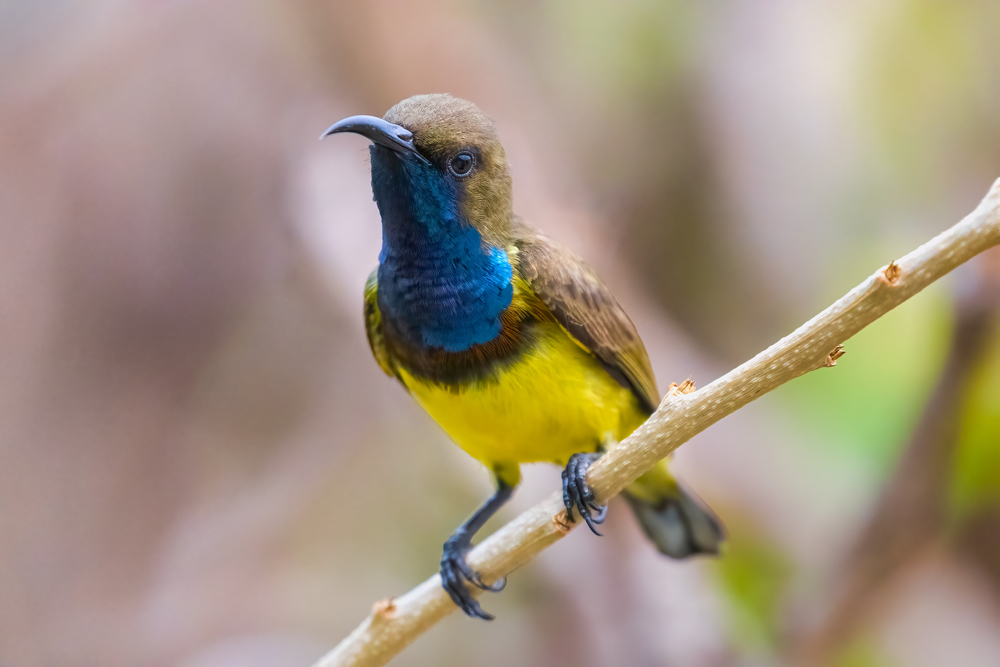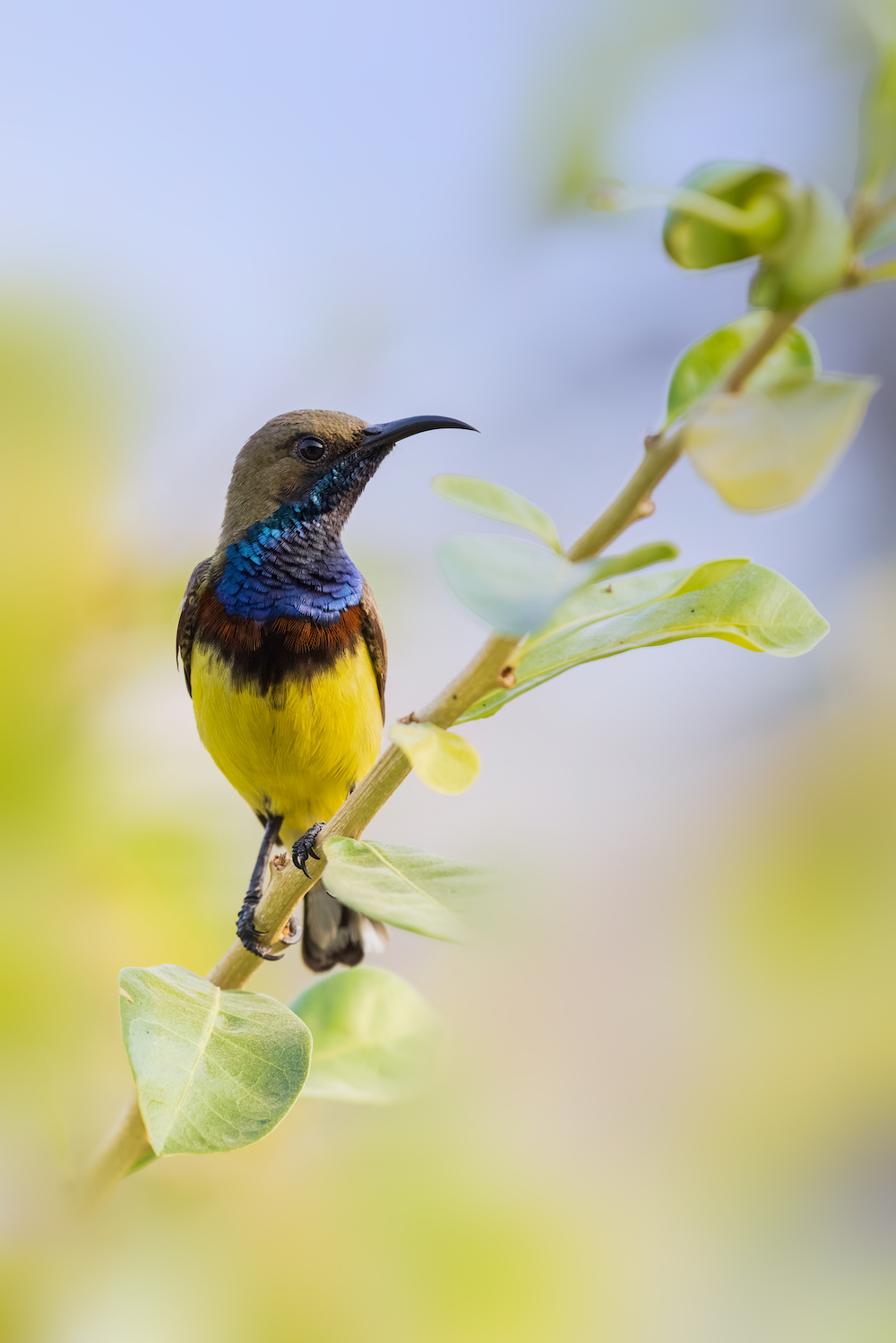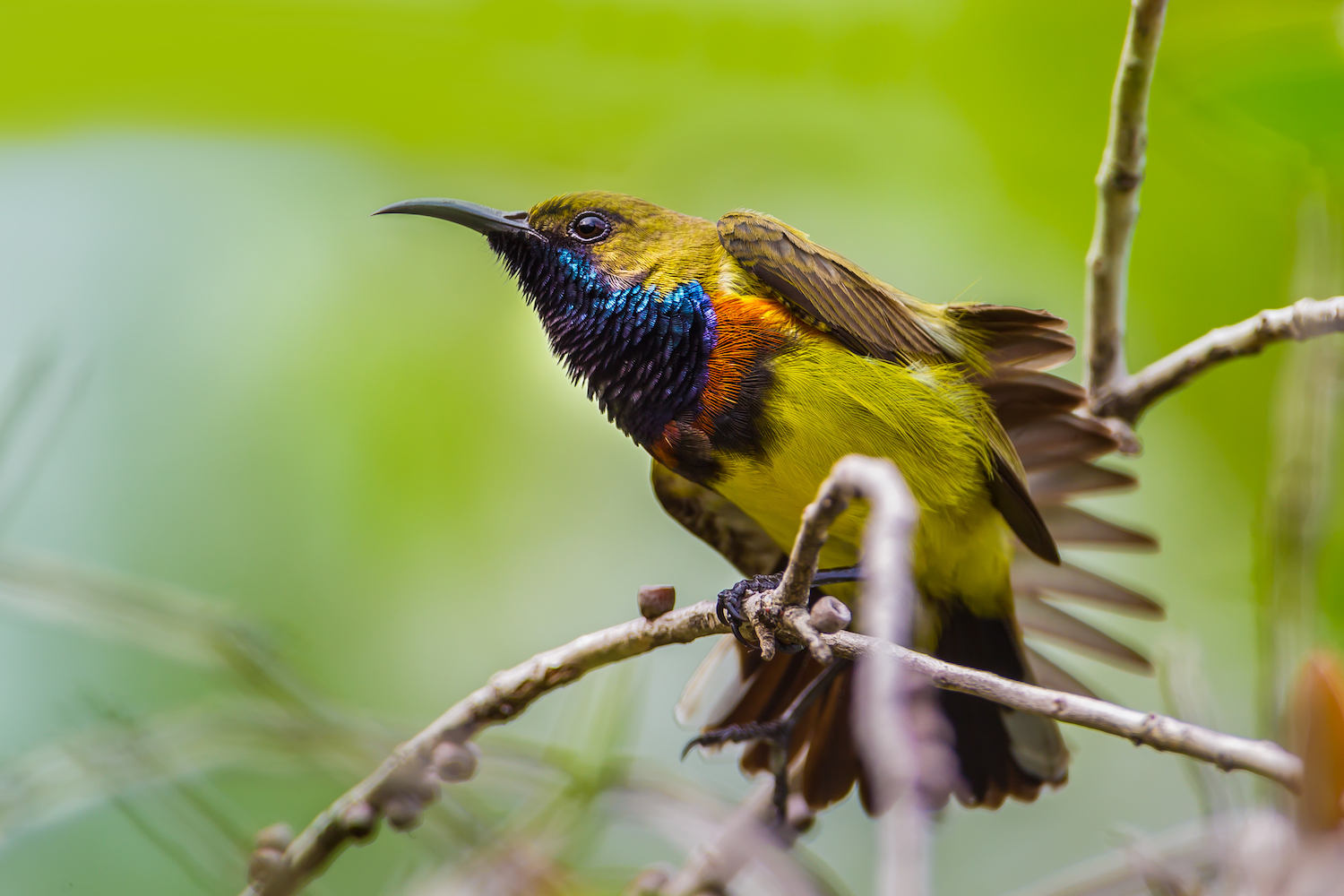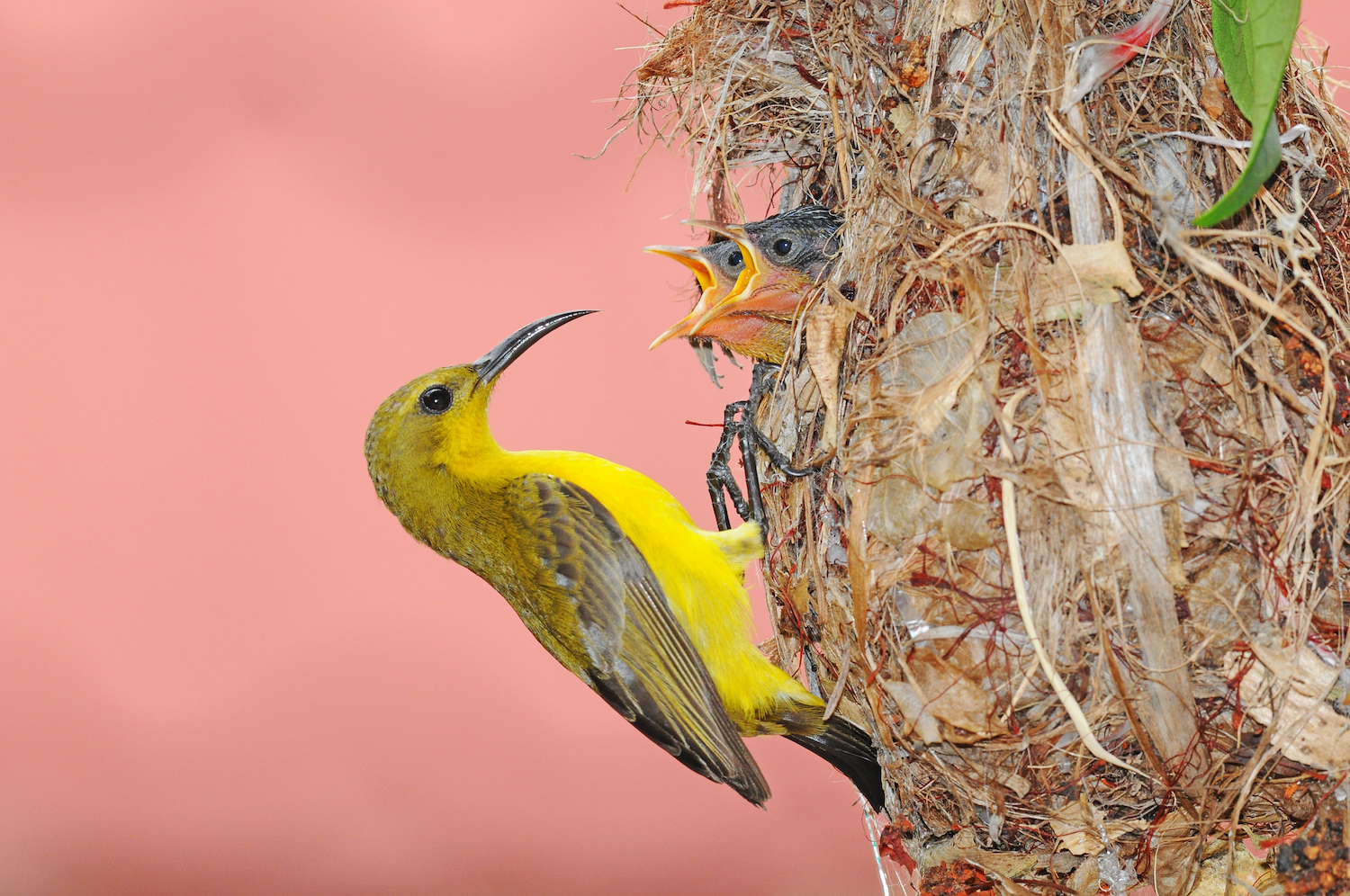The Metallic Blue and Yellow Olive-backed Sunbird Has a Secret Feature Tucked Beneath Its Wings
The male olive-backed sunbird of southeast Asia and Australia is a small beauty with a colorful feature tucked beneath its wings. His metallic blue and yellow plumage is augmented by a sudden burst of apricot when it comes time to find a mate.
Meanwhile, the female olive-backed sunbird is less colorful than her male counterpart, who pulls out all the stops during mating season. The small songbird also has a bright yellow belly, attractive iridescent blue feathers on his upper chest and throat, and olive-colored back and wing feathers, but the splash of apricot feathers beneath his wings is truly his secret weapon which is only displayed when the male tries to attract the female.

The birds usually mate from the months of April to August in the Northern Hemisphere, and August to January in the Southern Hemisphere.
When a pair mates successfully, the female will build a pear-shaped nest from grass stems and other fibrous material with a small entrance on the side, by herself, according to One Big Birdcage. She will lay up to three pale green eggs with brown speckles, and incubate them for 11 days.


The male then returns once the chicks are hatched, and shares feeding duties with his mate for 16 days until the fledglings fly from the nest.
The olive-backed sunbird–cinnyris jugularis–measures around 12 centimeters long and is omnivorous, feeding on the nectar of coconut and papaya flowers and foraging for invertebrates such as spiders, ants, and caterpillars. They fly fast, and many take nectar by hovering, but often prefer to find a perch from which to feed according to Thai National Park.

These birds have an extensive habitat range which includes southern China, Philippines, Myanmar, Laos, Thailand, and Malaysia, Indonesia, and northeast Australia. Although they were initially linked to mangrove swamps, they have now been acclimatized to human spaces. It is not uncommon to see Olive-backed sunbirds in woods, orchards, and coconut plantations bordering towns and villages.
Their population is believed to be stable, and their special apricot-colored wings may delight bird lovers for generations to come.

Share your stories with us at emg.inspired@epochtimes.com, and continue to get your daily dose of inspiration by signing up for the Inspired newsletter at TheEpochTimes.com/newsletter





